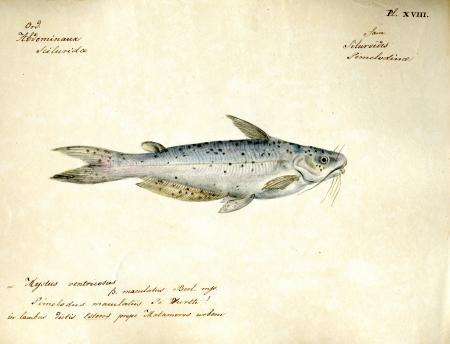
Very little is known about the personal life of Jean Louis Berlandier. Born ca. 1805 in France near the Swiss border, Berlandier sought education as a pharmacist, however, his study of Botany under the tutelage of Auguste-Pyramede de Candolle at the Academy of Geneva piqued his interest in the natural sciences, and drew him onto a path that would broaden with every step. Curiously, and perhaps completely unforeseen to Berlandier, this path, which began in Geneva, would end in Matamoros, Mexico, 1851.
Berlandier’s extensive fieldwork as a naturalist began in 1826, when, at the suggestion of de Candolle, Berlandier joined the Mexican Boundary Commission (Comision de Limites) as a botanist and zoologist. He remained with the Mexican Boundary Commission through 1829, collecting and cataloging botanical and zoological specimens in throughout northeastern Mexico and southeastern Texas. In the fall of 1828, Berlandier accompanied Col. Jose Francisco Ruiz and Comanche Indian leaders on a hunting trip up the Guadalupe River into what is now Texas, northwest of San Antonio. It was during this excursion that Berlandier began to consciously observe and note the practices of the Plains Indians while continuing his collection of botanical specimens.

A devoted student of science, Berlandier kept detailed meteorological and astronomical journals throughout his lifetime. These notes continue to aid scholars and are among the oldest and most complete records of this variety for southeastern Texas/northeastern Mexico. Please see the finding aid for Record Unit 7052: Jean Louis Berlandier Papers, 1826-1851, and related papers to 1886, specifically the listing for Boxes 1–11, for further details.
Upon the dissolution of the Mexican Boundary Commission in 1829, Berlandier settled in Matamoros, Mexico, where he practiced as a physician and pharmacist, while continuing collecting natural history specimens, concentrating on birds, fish, reptiles, and amphibians. He spent the rest of his life in Matamoros, studying local culture, building his medical practice, collecting specimens, observing the increasing tensions between the United States, Mexico, and native peoples. Jean Louis Berlandier’s life came to an untimely end in 1851. While crossing the San Fernando River on horseback, as he had done many, many times, the unusually swift currents of the river pulled him under, and would not let go.

Fortunately, many of Berlandier’s notes and journals were saved and continue to be studied by scholars. The Archives collection of Berlandier Papers consists of materials purchased from Berlandier’s widow in 1853 by Lieutenant Darius Nash Couch. This collection includes Berlandier’s extensive meteorological notes, natural history manuscripts, and a remarkable collection of drawings and watercolors depicting several specimens of birds, fish, reptiles, and amphibians. Personally, I find the drawings breathtaking; not only are they more than 150 years old, they are vibrant, detailed, and demonstrate the level of devotion Berlandier presumably held for the study of natural history. Berlandier’s contemporaries acknowledged the significance of his contributions as a naturalist by bestowing his name on a tortoise he “discovered” and documented, Gopherus berlandieri. For Berlandier's description of the Emys bicolor tortoise above, please click here.
There are additional collections of Jean Louis Berlandier at Harvard University’s Gray Herbarium Library, Yale University’s Beinecke Rare Book and Manuscript Library, and the University of Texas at Austin’s Briscoe Center.
Related Collection
- Record Unit 7052 - Jean Louis Berlandier Papers, 1826-1851, and related papers to 1886, Smithsonian Institution Archives
- Guide to the Jean Louis Berlandier Papers, 1826-1829, University of Texas at Austin Collection
- Papers of Jean Louis Berlandier, 1825-1855, Harvard University, Gray Herbarium Library
- Jean Louis Berlandier Papers, 1813-1847, n.d, Yale University, Beinecke Rare Book and Manuscript Library
Related Resources
- Berlandier’s tortoise (Gopherus berlandieri), ARKive
Produced by the Smithsonian Institution Archives. For copyright questions, please see the Terms of Use.

Leave a Comment